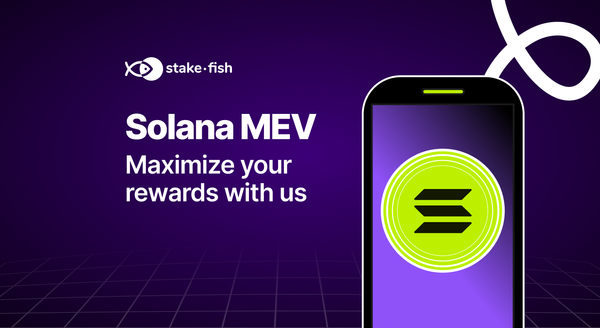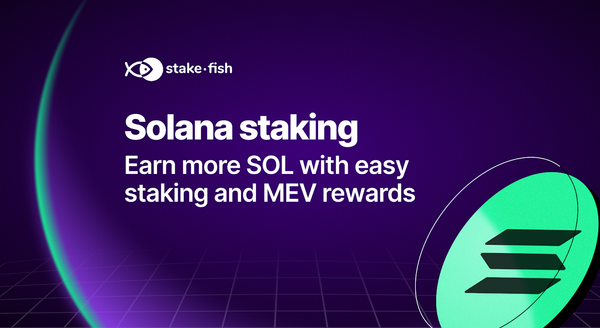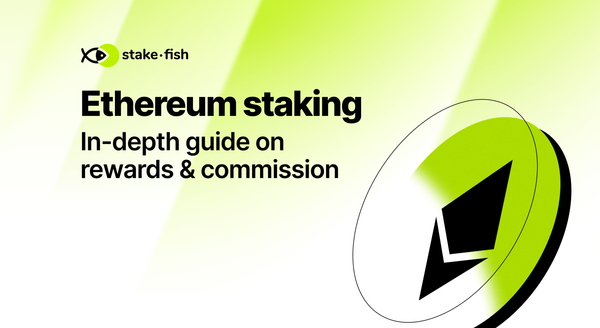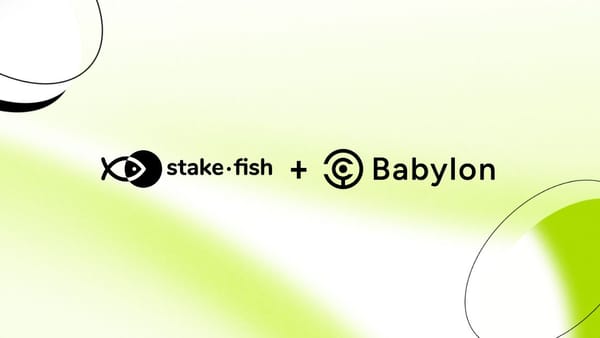Ethereum Consensus and Execution Layer Rewards
A relevant explanation of our staking protocol incentives.

When staking Ethereum, users are often confused about what rewards they can earn when staking with stakefish. To help remedy this confusion and clarify rewards for new and old stakers, we have created this post to explain the different types of rewards.
Different types of staking rewards
On a high level, there are two types of rewards:
- Consensus layer rewards
- Execution layer rewards
In short, consensus layer rewards do not change regardless of network traffic volume, and execution layer rewards fluctuate based on network traffic volume.
We will break down what these mean in the following sections.
Consensus layer rewards
To understand consensus layer rewards, we first must understand what the consensus layer entails. A consensus means a general agreement is reached. On Ethereum, this means that at least 66% of the nodes agree on the global state of the network. This consensus layer incorporates the consensus mechanism, which is the entire stack of protocols, incentives, and ideas that enable the distributed set of nodes to agree upon the state of the Ethereum blockchain.
The consensus layer rewards awarded are for participating in the Ethereum Proof-of-Stake consensus protocol by proposing or validating blocks, voting for their view of the head of the chain, and participating in sync committees.
Breaking this down further, a validator can receive the following types of consensus layer rewards.
Block proposal reward
This reward is for validators that propose blocks.
Additionally, block proposal rewards can include whistleblowing rewards for providing evidence of dishonest validators, for example, proposing multiple blocks in a single slot or submitting contradictory attestations.
Attestation reward
Attestation rewards are the most common type of reward for validators.
An attestation is a vote in favor of the validator’s view of the chain. Every epoch (6.4 minutes), a validator proposes an attestation to the network. This attestation entails the most recent justified block and the first block in the current epoch. This information is then compiled for all participating validators in the network, enabling it to reach consensus regarding the state of the Ethereum blockchain.
Validators attest to their view of the chain as part of the consensus protocol by:
- voting for a source checkpoint for Casper FFG;
- voting for a target checkpoint for Casper FFG; and
- voting for a chain head block for LMD-GHOST.
Sync committee reward
A sync committee is a group of 512 validators. Every 27 hours (256 epochs), 512 validators are randomly assigned by the Ethereum network to a sync committee.
This committee continually signs the block header that is the new head of the chain at each slot. This purpose is to allow light clients (less than complete node, i.e. a pruned node), mobile phones, or embedded devices to verify the blockchain without needing to connect to an external provider. Light clients can authenticate block signatures, reducing the computational power required to authenticate a block header. Validators in the committee get significantly more rewards for serving light clients.
For those interested in learning more about consensus layer rewards, we recommend reading Rewards at eth2book.info and PoS rewards and penalties.
An essential property of consensus layer rewards is that they decrease as more validators join and increase as validators exit.
The consensus layer rewards stay the same regardless of network traffic volume.
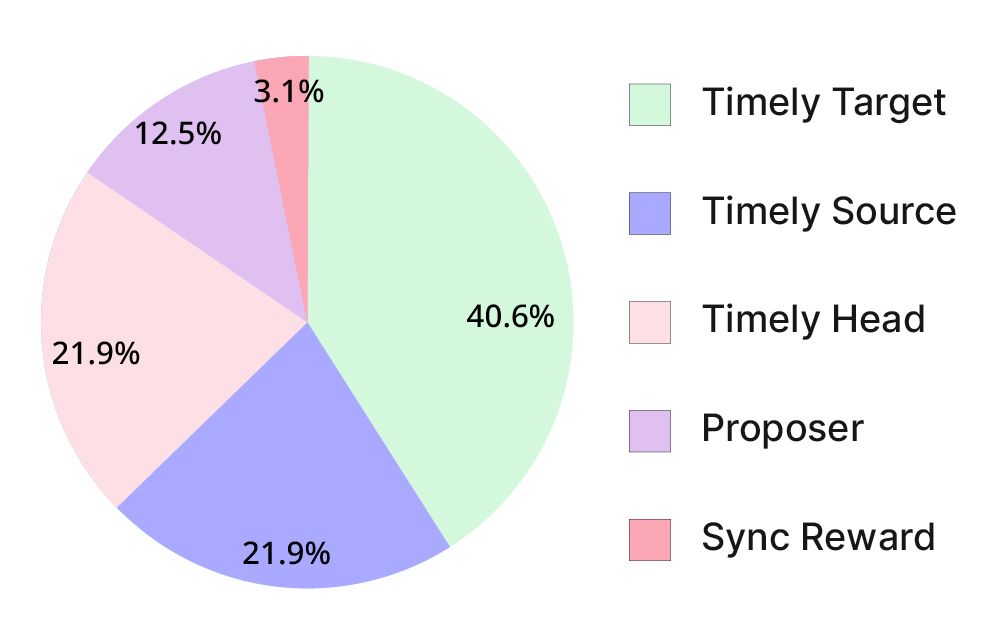
Execution layer rewards
Now that we have an understanding of consensus layer rewards let us understand what the execution layer rewards entail.
The execution layer is the layer on the Ethereum blockchain that provides the environment for applications and smart contracts to operate and process transactions within and between applications.
Execution layer rewards are rewards available to validators for “special treatments” of certain transactions. Execution layer rewards are paid directly to stakefish configured fee recipient addresses, the addresses that validator operators set up to receive the priority, and MEV tips.
As a validator operator, at present stakefish has chosen to share 80% of these rewards with our stakers.
This amount of execution layer rewards shared with stakers may increase, decrease, or not be available in the future.
In general, there are two types of execution layer rewards:
- Transaction priority tips
- MEV tips
Transaction priority tips
Transaction priority tips are associated with each transaction. The transaction’s sender includes them to incentivize validators to process the transaction faster.

MEV tips
MEV tips are associated with “MEV bundles”: transactions that exploit worthwhile opportunities, such as arbitraging across DEX pools.
In Ethereum, MEV searchers constantly look for promising, time-sensitive opportunities. MEV searchers tip validators for processing bundles of their transactions quickly. As a validator operator, stakefish, in its sole discretion, has decided to run specialized software to help MEV searchers clear their bundles of transactions.
An essential property of execution layer rewards is that, as opposed to consensus layer rewards, execution layer rewards do fluctuate based on network traffic volume. When the Ethereum network is busy, people include more priority tips, and more MEV opportunities appear.
Further reading:
For those curious to dive into more of the nuances of consensus and execution layer rewards, we recommend reading:
- Rewards (eth2book.info)
- PoS rewards and penalties (ethereum.org)
- Light Client (geth.ethereum.org)
For updates and special announcements, follow our Twitter (@stakefish 🐠) and join our community on Telegram.
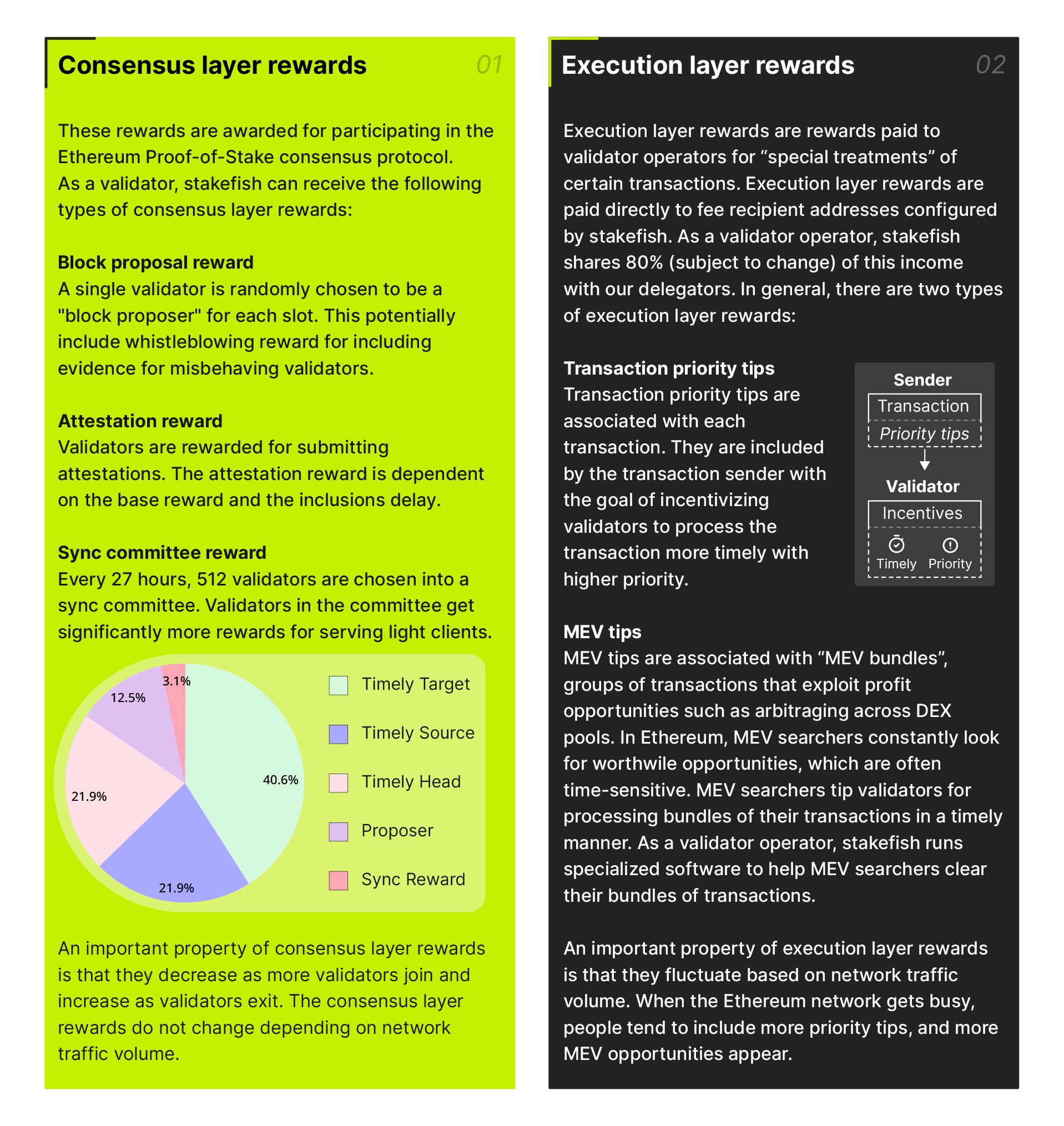
About stakefish
stakefish is the leading validator for Proof of Stake blockchains. With support for 20+ networks, our mission is to secure and contribute to this exciting new ecosystem while enabling our users to stake confidently.
Visit our website 🐠 | Telegram | Twitter | Instagram | YouTube | LinkedIn | Reddit


